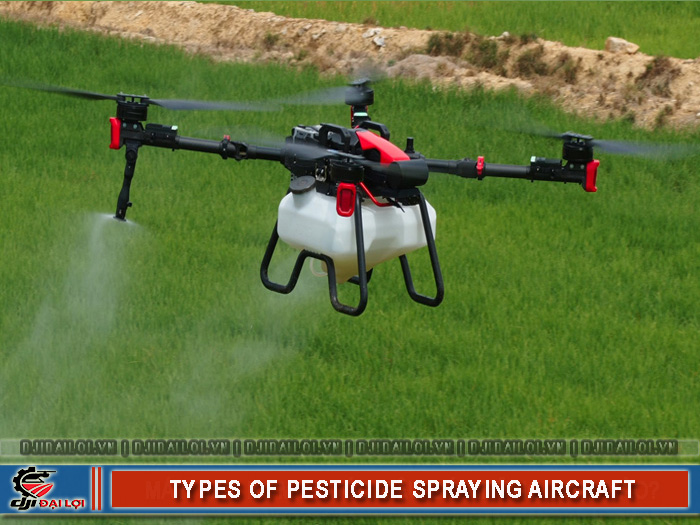
In large-scale farming areas, farmers are facing growing challenges: pests spreading rapidly, labor shortages, and unpredictable weather requiring fast and accurate spraying. In this context, pesticide spraying drones have emerged as a modern mechanization solution that saves manpower, boosts efficiency, and reduces health risks for operators.
In the past, pesticide application relied mainly on manual labor or backpack sprayers, which carried high risks of chemical exposure. With agricultural drones (UAVs), farmers can pre-program flight paths and let the device operate autonomously - even in complex terrains like terraced fields, fruit orchards, or hilly farms.
The rapid development of unmanned flight technology and increasingly affordable prices have made agricultural spraying drones no longer a “luxury” device. In particular, drone models such as DJI Agras, XAG, and TTA are widely adopted by cooperatives and large farms due to their high efficiency and easy operation.
When investing in a pesticide spraying drone, farmers should consider several factors to ensure suitability with their cultivation conditions and maximize operational efficiency.
Small-capacity drones (5–10L) are ideal for fruit orchards and farms under 5 hectares. For larger areas (over 10 ha), choose drones with 15–30L tanks and larger propellers for wider coverage per flight.
Centrifugal nozzles are suitable for biological pesticides, while pressure nozzles work better with concentrated chemical pesticides. Droplet size, mist density, and penetration ability directly affect pest control performance.
A key factor is flight time per charge, typically 10–30 minutes depending on the model. Drones with fast-charging or interchangeable batteries help minimize downtime during operations.
Modern drones come with GPS RTK, obstacle-avoidance radar, and terrain mapping systems, enabling precise flight even under windy or uneven conditions. These features increase accuracy while reducing collision and chemical loss risks.
Trusted brands like DJI, XAG, Hylio, and TTA offer durable hardware, user-friendly software, and strong after-sales support networks.
The market currently features three main categories of pesticide spraying drones, classified by technology and usage scale:
|
Drone Type |
Tank Capacity (L) |
Coverage Area (ha/flight) |
Automation Level |
Price Range (VND) |
|---|---|---|---|---|
|
Small rotor drone (5–10L) |
5–10 |
1–2 |
Low |
70–150 million |
|
Mid-range drone (15–20L) |
15–20 |
3–5 |
Medium |
180–300 million |
|
Large-capacity drone (30L+) |
30–40 |
6–10 |
High |
400–650 million |
This standout series from DJI offers wide coverage, flexible spraying speed adjustment, obstacle-avoidance radar, and 3D terrain mapping. DJI’s user-friendly remote-control ecosystem makes it ideal even for beginners.
Featuring a dual-rotor symmetric design for superior stability in strong winds, XAG drones also use AI to analyze crop humidity and automatically adjust spraying volume for optimal results.
Manufacturers like VietUAV and agricultural cooperatives have developed low-cost drones that are lightweight and easy to repair. However, their performance and stability still lag behind international brands.
While all drones serve the same purpose - spraying pesticides - they differ in effectiveness and application suitability.
No single drone fits all situations. The choice depends on three key factors: cultivation area, crop type, and budget.
Compact 10L drones are ideal - lightweight, easy to operate, and fuel-efficient. Examples include DJI T10 or TTA Model Mini.
Choose drones capable of low-altitude, concentrated spraying such as XAG V40, featuring anti-wind nozzles and strong stability.
Opt for 30L+ models like DJI T40, which integrate terrain mapping, RTK systems, and intelligent control. Though more expensive, they deliver exceptional productivity.
Based on user feedback and distributor surveys in Vietnam, here are the most popular drone models of 2025:
|
Model |
Tank Capacity |
Key Features |
Price Range (VND) |
|---|---|---|---|
|
DJI Agras T40 |
40L |
3D mapping, precision spraying, RTK radar |
550–600 million |
|
XAG V40 |
16L |
Dual-axis design, AI sensors |
420–480 million |
|
TTA Model 20 |
20L |
Competitive pricing, localized parts |
300–350 million |
|
DJI T10 |
10L |
Compact, easy to use, ideal for fruit trees |
180–220 million |
|
VietUAV AgriMini |
6L |
Affordable, easy maintenance |
100–130 million |
Despite their advantages, drone operations in Vietnam are strictly regulated. Operators should comply with the following legal requirements to avoid penalties.
All drones over 25 kg or used for commercial purposes must be registered with the Department of Operations – Ministry of National Defense. Additional flight permits are required in restricted zones, especially near airports or military areas.
Imported drones must have proper certificates of origin (CO/CQ) and quality inspections. Lack of documentation may result in confiscation during inspection.
According to Circular No. 19/2019/TT-BNNPTNT, agricultural machinery used over large areas must have civil liability insurance and trained operators.
Flying in unauthorized zones or without permits may lead to fines up to 40 million VND and equipment confiscation. Severe violations may be investigated under aviation security laws.
Pesticide spraying drones play a crucial role in agricultural modernization, delivering higher productivity and long-term cost savings. However, users must choose the right model based on area, crop type, and budget - while also complying with safety and legal requirements. If you plan to invest, start with reputable brands like DJI or XAG to ensure reliability and long-term value.
Yes. Propellers, nozzles, batteries, and control software should be checked every 50–100 flight hours for safety and efficiency.
Less than traditional methods, thanks to precise spraying that reduces pesticide volume and chemical residue.
Absolutely. Many cooperatives and service providers offer hourly, per-hectare, or seasonal rental packages.
Some advanced models can fly at night using infrared sensors, but strict safety and legal conditions must be followed.
Yes, but use centrifugal nozzles or lower pressure to preserve the biological properties of the pesticide during spraying.